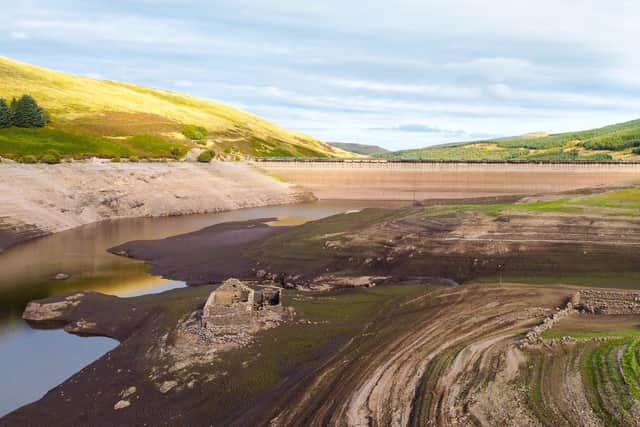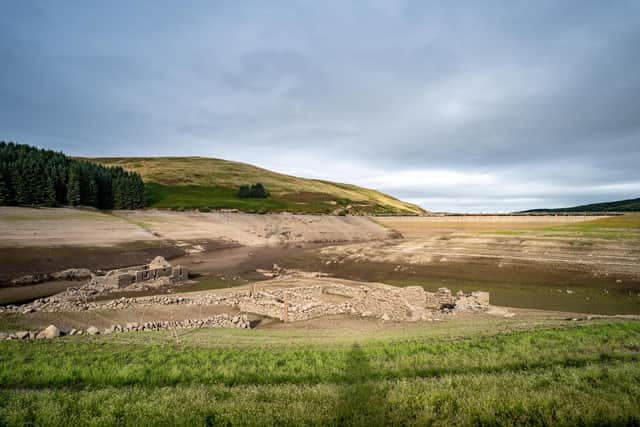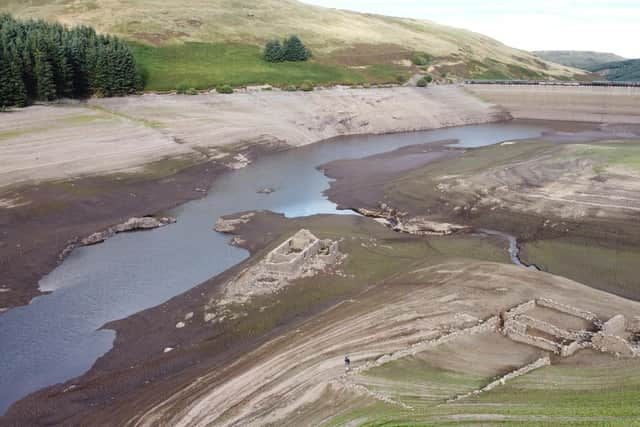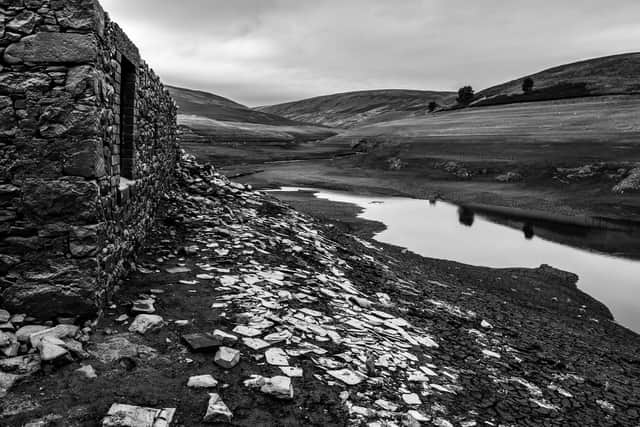Lost Scottish landscape re-emerges from the deep of reservoir
This incredible footage shows the long-submerged landscape at Upper Glendevon in the Ochill Hills, which was flooded almost 70 years ago to create a reservoir to supply drinking water to Fife.
As water levels fell away given the recent long dry spell, the glen as it once appeared came back into view.
Advertisement
Hide AdAdvertisement
Hide AdThe ruins of a shepherd’s hut, long underwater, glinted in the sunshine and shoots of green grass started to appear. Bits of discarded crockery were seen stuck in the muddy floor.


Calum Gillies, of the Isle of Rasaay, captured the images of Upper Glendevon, while on a recent holiday.
“It was like nature was returning,” he said.
Mr Gillies, who works in marketing and is a keen photographer and artist, added: “As far as I know, the shepherd’s hut was lived in until the glen was flooded. When it came into view, it was just perfect.


"The sun was coming through the clouds and was hitting the cottage like a spotlight.”
Upper Glendevon reservoir was created in 1955 and is part of a network of five reservoirs carved out of the dramatic landscape.
It holds around 4,844 million litres of water, which is held back by a 45-metre high dam.
The receding water levels have helped to put the people back in this sparsely-populated rural landscape deep in the hills.


Shielings, used as shelters during summer grazing, dotted the glen from the 1500s, with settlements appearing to have taken root in the upper glen between about 1680 and 1720.
Advertisement
Hide AdAdvertisement
Hide AdDuring the 1800s, farms established themselves in Glen Bee at the western end of the reservoir and at Broich, the site of which now lies under the reservoir, according to research by Perth and Kinross Historical Trust.
Closer examination of the exposed landscape in the past has found two possible prehistoric burial cists and a motte, or mound, which may have been home to a structure or camp.
As the building of the Upper Glendevon got underway, newspaper reports recorded concerns over the quality of imported concrete from Belgium and calls for workers to be allowed to serve for 14 hours a day, six days a week.


An area of around 40 hectares was flooded, but after the reservoir opened in 1955, leaks were reported with it drained to make way for fresh concrete that was pumped into deep boreholes.
Mr Gillies took the footage at the end of last month, but recent rainfall has pushed water levels up at the loch to around 16 per cent.
A spokesman for Scottish Water said: “The Upper Glendevon reservoir is one of five reservoirs that make up the Glendevon supply system and the water level of this particular reservoir does tend to drop to low levels in most summers.
"The combined storage of the overall Glendevon reservoir system has been below average for the time of year in recent months, but has remained within normal operation range with no immediate concerns.
“As we move into autumn, we encourage all customers to continue to use water efficiently and to make small changes that will help reservoir levels to recover after a dry summer.”
Advertisement
Hide AdAdvertisement
Hide Ad-Visit youtube.com and calumgillies.com to see more of Mr Gillies’ footage from Upper Glendevon.
A message from the Editor:Thank you for reading this article. We're more reliant on your support than ever as the shift in consumer habits brought about by Coronavirus impacts our advertisers.
If you haven't already, please consider supporting our trusted, fact-checked journalism by taking out a digital subscription.
Comments
Want to join the conversation? Please or to comment on this article.
